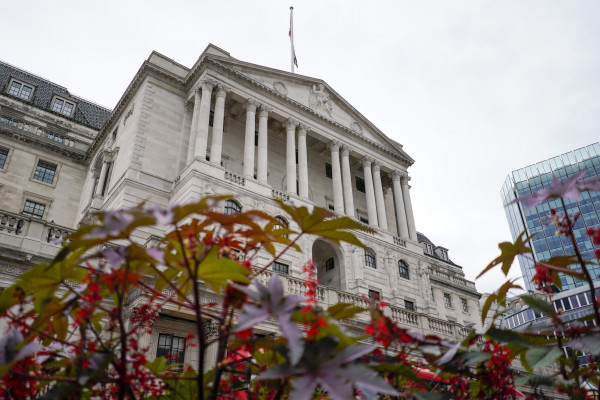

Having sat at a record low of 0.1 per cent since March 2020, all eyes are on whether the base rate will finally increase by the end of the year.
The current inflation rate of 3.1 per cent, while down by 10 basis points from August, remains above the inflation target of 2 per cent.
Savers, who are contending with inflation alongside low interest rates, are more likely to welcome any rise in the base rate compared to borrowers.
Simon Gammon, managing partner of mortgage broker Knight Frank Finance, says a rise in the base rate this year is very likely. He predicts a modest increase of up to 25 basis points, saying that the rate “needs to rise” from its 19-month record low.
“We do expect interest rates to rise. Whether it’s this side of Christmas or just after, time will tell, but it’s imminent.
“Therefore my advice to anyone who is looking to borrow or needs to review their mortgage product in the next six to nine months is do it now, because you could end up locking in a product that you won’t have access to at Christmas time or in spring.
“Now is the time to move, because we are inevitably seeing interest rates and mortgage products going to increase in their rate – I think over the next six months. Every indicator points to that.”
Chris Sykes, an associate director and mortgage consultant at Private Finance, is already seeing mortgage rates rise, citing changes by major lenders Halifax, HSBC, Nationwide and NatWest.
But he also notes that while rates at lower LTVs are rising, rates at higher ratios from 80 per cent upwards are still reducing, albeit from high levels during the pandemic.
Sykes likewise says that borrowers who require a remortgage should consider doing so now. He adds that for borrowers who are, for example, four years into a five-year deal, it may be worth looking at the cost of remortgaging even if this would incur early repayment charges, as savings could still be had.
Nick Mendes, a mortgage technical manager at broker John Charcol, agrees. “Taking into account the early repayment charge, if it’s 1 per cent and you’ve got less than a year left, by paying the early repayment charge you may find it beneficial to do that and go onto a new deal for another five years as an example, while the rates are where they are.”
Although Sarah Coles, a personal finance analyst at Hargreaves Lansdown, says rate rises will eventually feed into higher mortgage payments over the coming years, she notes: “As yet, rate rises are being predicted at relatively modest levels, and from a historically low base, so there will still be affordable deals available.”
Economists’ view
Andrew Wishart, a property economist at Capital Economics, says the research company has forecast increases in the base rate, but not until spring.
“Our forecast is that we’ll see the first increase in bank rate to 0.25 per cent in May next year, and then to 0.5 per cent in 2023.
“The reason we think it’s going to be a bit longer is because the furlough scheme only ended at the end of September and that potentially has the possibility to change the picture of the labour market.
“Shortages in the labour market and strengthening underlying wage growth are one of the main reasons the Bank of England thinks that it might need to raise interest rates. So that’s the reason for the timing of our forecast.”
Wishart also says that a modest increase in the base rate would not push mortgage rates up by much, if at all, noting improvement in banks’ risk appetite, which he expects will likely offset any small rise in the base rate.
“It’s important to note that mortgage rates are basically where they were when Covid-19 first hit, and when bank rate was at 0.75 per cent. They didn’t really drop with the drop in bank rate.
“And so in terms of our forecast for a modest rise in bank rate, we suspect that as banks’ risk appetite improves – and has improved – because of the recovery we’ve seen so far, and because at the start of the pandemic there was a lot of concern about falling house prices, which has now been resolved (we’ve seen very strong house price growth), we suspect that the gap between the spread of mortgage rates over bank rate could narrow and mean that mortgage rates don’t rise much, if at all.”
According to Wishart, mortgage lenders’ interest margins improved during the pandemic to account for the perceived increase in lending risk at the onset, amid uncertainty over the economy and house prices.
He continues: “But as that’s receded and we’ve come out of a pretty benign labour market outcome and house prices doing very well, and all the near-term indicators suggesting that they will continue to do well, banks are willing to accept a narrower margin again, so they’ll probably absorb much of the increase in their financing costs due to rising interest rates, as long as those rises in interest rates aren’t too big.”
Likewise, Andrew Gall, chief economist at the Building Societies Association, says he believes the Monetary Policy Committee will take a ‘wait and see’ approach, also citing the end of the Coronavirus Job Retention Scheme.
And while mortgages tend to become more expensive following a base rate rise, Gall predicts that recent competition, which has seen some mortgage rates fall below 1 per cent, will remain.
“That competition I think is still going to remain intense, even if the base rate and wider market rates start to rise.”
Chloe Cheung is a features writer at FTAdviser



